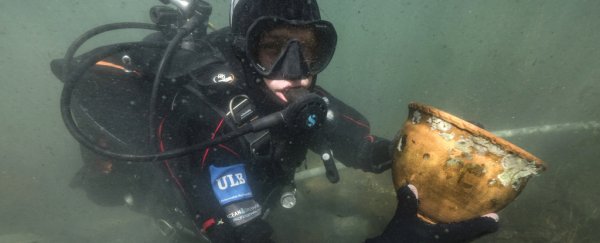Hundreds of years ago, the west coast of South America was ruled by the Incas - a mysterious empire considered to be the most elaborate society to exist in the Americas before the arrival of Columbus. This is not their story.
For long before the Incas held dominion over the sweeping lands stretching from Colombia to Chile, an even more mysterious and ancient society inhabited this elevated Andean region.
This older empire was called the Tiwanaku state, whom we know even less about. At their peak, they may have only numbered 10,000 to 20,000 people.
What scarce details we do know about the Tiwanaku state come from archaeological finds, uncovering a trail of clues about the Tiwanaku people and their long-gone culture. Now, scientists have just announced the discovery of a big new piece of the puzzle.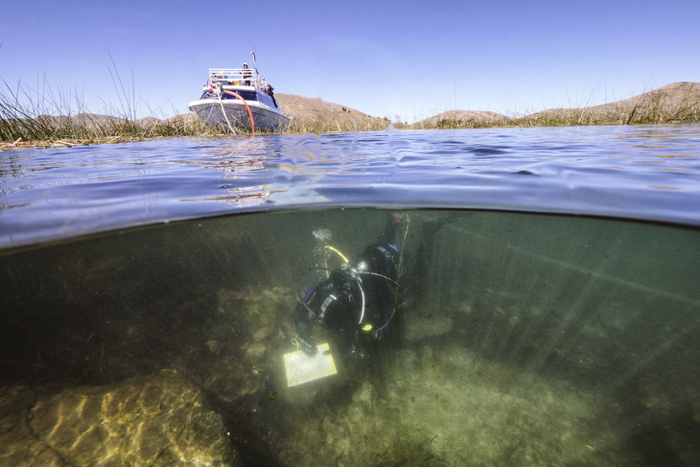 (Teddy Seguin)
(Teddy Seguin)
In the first systematic archaeological dive and excavation conducted in the waters of the Khoa Reef, close to the Island of the Sun in Bolivia's Lake Titicaca, researchers found submerged evidence of ritual offerings made to supernatural deities – meaning religion existed in this part of the world a lot earlier than we thought.
"People often associate the Island of the Sun with the Incas because it was an important pilgrimage location for them and because they left behind numerous ceremonial buildings and offerings on and around this island," says anthropologist Jose Capriles from Pennsylvania State University.
"Our research shows that the Tiwanaku people, who developed in Lake Titicaca between 500 and 1,100 CE, were the first people to offer items of value to religious deities in the area."
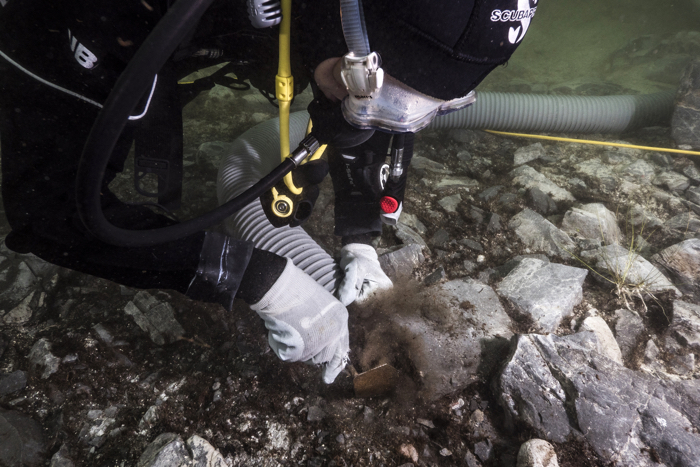 (Teddy Seguin)
(Teddy Seguin)
Capriles and his team used sonar and underwater 3D photogrammetry to scan and map the reef during a 19-day research visit to Lake Titicaca during 2013.
Dredging the sediment in the lake, they found puma-shaped incense burners, with fragments of charcoal present on the excavated deposits, and a number of gold, shell, and stone ornaments.
The puma is thought to have been an important religious symbol to the Tiwanaku, and a rayed-face motif depicted on two gold medallions suggests the offerings were supposed to explicitly address the main mythical figure in their religious iconography, sometimes called Viracocha.
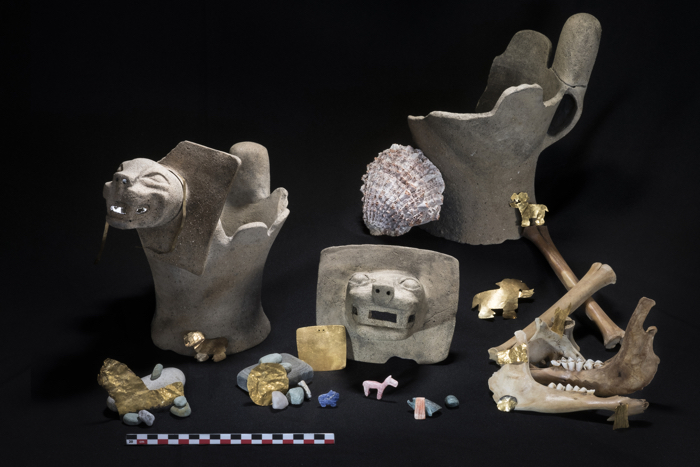 (Teddy Seguin)
(Teddy Seguin)
Interestingly, the researchers say these offering pieces – dated to sometime between the 8th and 10th centuries CE – didn't find their way into the lake by accident, but look like they were designed to be submerged.
"The presence of anchors near the offerings suggests that officiating authorities may have deposited the offerings during rituals held from boats," says Capriles.
Amidst the dredging, the researchers also found evidence of fish, amphibian, and bird bones, which the team says were likely deposited naturally within this submerged ecosystem.
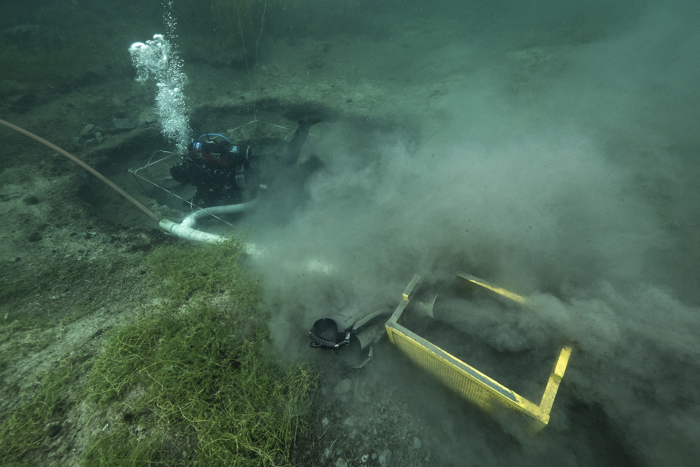 (Teddy Seguin)
(Teddy Seguin)
But one animal in the mix is not like the others. The bones of four young llamas were also discovered: animals who were thought to be killed at or near the site, then interred in the sea as sacrificial offerings in the ancient ritual.
While we can't know for sure exactly what these long-ago acts of offering signified to the Tiwanaku people who practised and observed the ceremony, the fact that such elaborate rites were performed at all tells us more about the state and sophistication of the Tiwanaku state.
"More than a mere cult in an extreme location, the ceremonies at Khoa reflect a complex interaction of being situated at the centre of the lake while being carried out by a small elite group," the authors write in their paper.
"They also emphasise the display of powerful forces, as the dissemination of rituals focused on the representation of a rayed-faced deity and smoke-gusting pumas, the sacrifice of juvenile llamas, and the conspicuous disposal of wealth."
The researchers say these symbolic gestures are all keystones of an emerging complex society – one that might have been expanding and reaching out, maybe seeking to cooperate with other groups in the Andean region and beyond.
Those efforts may have paid off in the short term, until around half a millennia later, it was the Incas' turn to officiate.
But long before one empire gave way to another, the Tiwanaku would pray, slay, and lay their offerings in the water of one of the world's highest lakes, perhaps being as close to their gods as they could get.
The findings are reported in PNAS.
